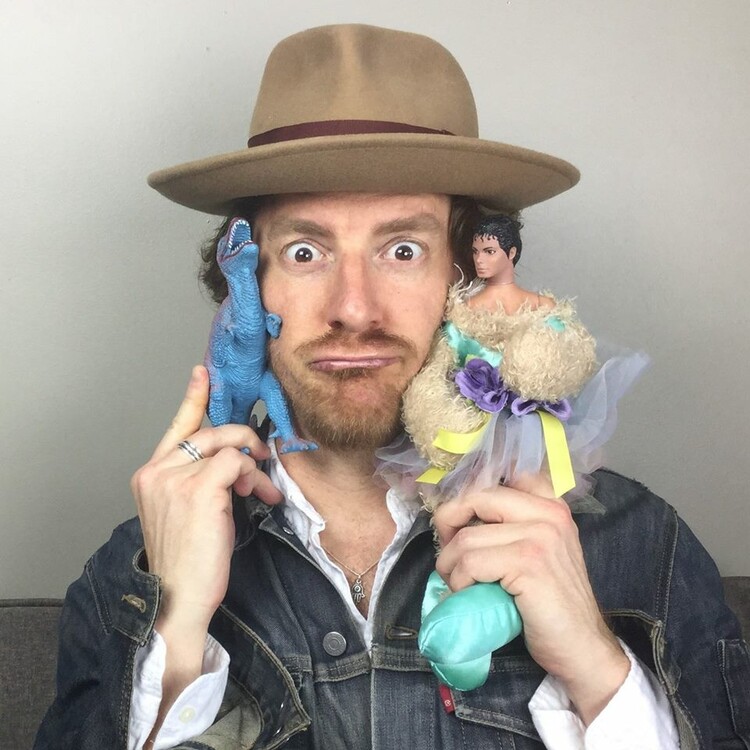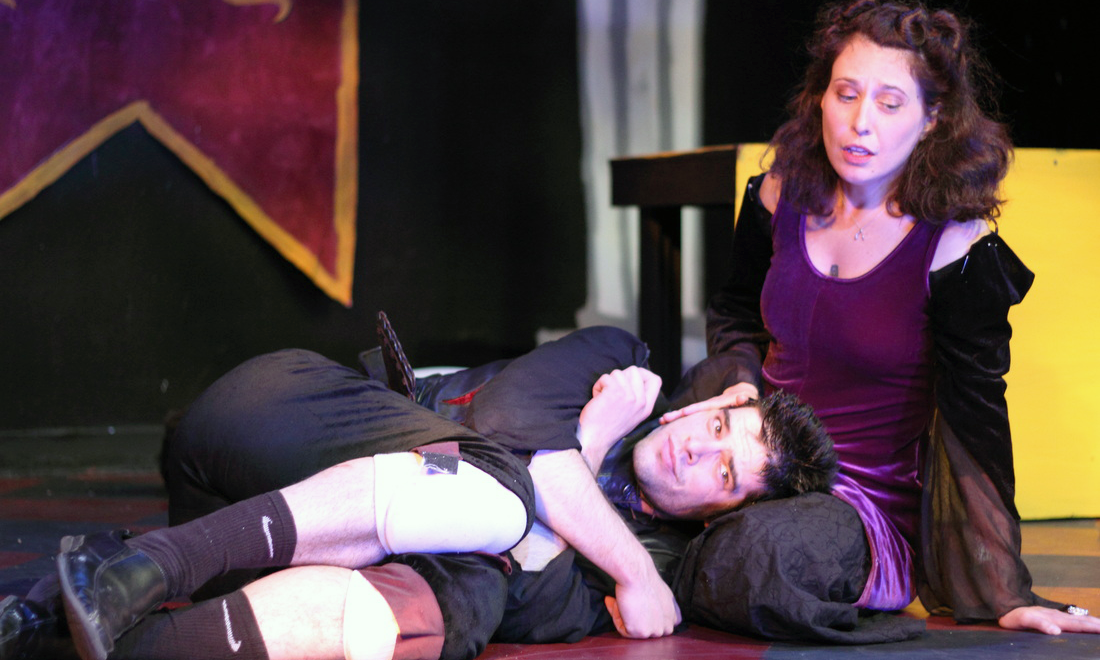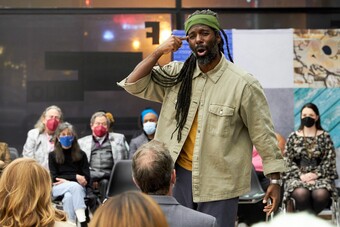Pull out that mission. If you want as many butts in seats as possible? Seek the most easily accessible theatre you can find: close to public transportation, parking, and foot traffic. That funky former garage space that’s only accessible by Uber is not the place for you. However, if your play tackles a specific social issue in a specific neighborhood in your city, and you want the locals to see it, prioritize making it accessible to that community. Try a church or a shop that closes at five and sits empty at night smack in the middle of the neighborhood. Offer ticket deals to local community organizations or put discount codes in the popular store next door.
Mission specificity becomes important here, as so many questions converge in picking a space. In Boston, we have a central theatre block with five theatres for rent. There are almost always two shows running on the block, and two of the theatres are occupied by major companies with many subscribers. Some producers put up shows there because of the central location and access to theatregoers who will see posters for their show. One problem with this: the centralized location has high costs because of demand. You may spend so much to rent the place you can’t adequately advertise. Another issue: the subscribers coming to the two bigger-draw companies may prefer to see tested, proven work. They may feel less likely to try out a new play by a playwright they’ve never heard of. I’ve seen shows run there for weeks, playing to empty houses, when another venue and deeper community connections may have meant a packed house.
Tickets and performance schedule work hand in hand with the venue—some venues even require you to follow a schedule or price chart, which is good to know before signing contracts! Assuming you have control over the matter, you will want to run the options through your mission matrix.
Who do you want to see your show, and what are they willing to pay? For my show Bear Patrol, I wanted college audiences. Every choice I made aimed at that: I had chosen a venue in the middle of a college campus and pinned cheap flyers at student hangouts off campus and on. On the ticket front, I made sure the price was accessible and competitive with student activities. At the time, this college held cheap concerts and nights and weekend activities for $5 to $10. So I charged $4.
Actually, I charged $5, but $4 with a student ID, $4 if you paid in cash, $4 if you said the “code” (which was the title of the play). You had to work hard to pay $5.
You need a place to do your show. Easy, right? Wrong. A variety of shapes, sizes, and locations await, and you need the one that’s right for you.
We were a hit with college students. And the ticket price was so brash that other producers and artists in town paid attention. And they came to see us.
As for performance scheduling, if you have a choice, run the options through your mission. For Bear Patrol, I wanted college audiences and others in the theatre community to see it. Most theatres in town follow the same schedule:
Wednesday & Thursday 7:30 pm
Friday & Saturday 8:00 pm
Sunday 2:00 pm or 3:00 pm
So we performed:
Friday & Saturday 7:00 pm and 10:00 pm
Sunday 5:00 pm
This worked in our favor for a few reasons. College students came at 7:00 pm and finished in time to go party, or they went to parties and came at 10:00 pm, half in the bag (our preference). Theatre folks saw competing shows at 8:00 pm and then came to see ours at 10:00 pm. On Sundays, we had no little competition.
There are other alternative schedules that can have some degree of success too, like holding performances on Monday nights, which is the night off for theatre. Hold a Monday show, add a discount, and call it “industry night” to get other actors and directors to see your work. A Monday show might also help get the press to come, as you’re giving them a chance to see your work when there’s no competition.
Act Three: Marketing
How do you get people to see your show? As always, your mission is your compass. If you want a specific critic to cover your show and don’t care about overall sales, you will market differently than if you want as many people as possible and don’t care about press. If you want literary managers from a theatre to attend, you’ll go in a different direction. And if the most important thing for you is to attract people from a specific neighborhood? Totally different marketing strategy.
This is where your dramatist skills come in handy. Put yourself in the place of your ideal audience and ask yourself: What would make them want to come? If you want press, you need to offer them a story they can sell to an editor, like “Hometown playwright takes the reins” or “City’s favorite director tries out a new script.”
For broad general audiences, there’s a lot more you can do. Consider offering discounts for special groups, like the early adopters who came to your reading. Give a discount code to fans of other small theatres who will send out an email about your show to their crowd. Consider dynamic pricing such as $20 if they buy before a specific date.
Put yourself in the place of your ideal audience and ask yourself: What would make them want to come?
But most importantly, you want to build a relationship through marketing. Here’s how:
Email
Remember that public reading you had where audiences came, laughed, and gave you their email addresses? Now you follow up! And at the same time, reach out to other followers and fans from previous projects and life. You can use an email marketing company like Mailchimp, which enables you to create slick emails from a range of templates, has flexible design options including images and video, and allows you to track how many people open it and click through to your ticketing page. Mailchimp will also convert the email to a post for Twitter and Facebook, which you can then share on those platforms.
Don’t be pushy with the emailing—spread them out. I like to do the following:
- Four to six weeks before opening night, send an email with the cast list, a link for tickets, and a killer blurb that makes people want to see the show.
- Two to three weeks before opening, follow up. Include pictures from rehearsals (better yet: a video trailer), a link to a character backstory online, and a ticket discount.
- During opening week, remind everyone you’re opening and that there’s a discount code, and share pictures of the production, with full costumes and sets.
- The week after opening, include in your email quotes from the press, social media mentions, or audience reactions.
- Continue, once a week throughout the show’s run, to reach out with a new little tidbit each time.
Partnerships
It’s hard going it alone in business; even Nike collaborates with different athletes and artists to branch out to new audiences. You can too! Joining forces with a local restaurant or community group can help you spread the word about your show, give the audience a richer experience, and give something back to the community.
People coming to a play are likely going to want food or drink before or after. Approach the restaurant down the block from your venue and suggest a partnership: diners can get 10 percent off their meal if they show their ticket for your show. You’ll email this offer to your fans, and the restaurant will put up posters or postcards for the show. Both businesses get more audience, and the audience gets a special deal.
Partnering with local organizations can serve the message of your show as well. Think about characters and themes from your play that might be of interest to a particular community or demographic. What organizations connect with those folks? Reach out to them and talk about potential overlap: offer their community a discount (or some other special access, like a post-show conversation or a chance to meet the cast) that might be of interest in exchange for the organization spreading the word. You get to reach more audiences and they get to deepen relationships with their members. One Boston company presented a play about domestic abuse and partnered with Dress For Success, an organization that helps women break cycles of poverty by outfitting them for professional interviews. The show raised funds and attention for Dress for Success and held special conversations after the show to shine a light on the issue locally. Both organizations received additional press from the partnership.
My general rules for social media have served me well: share new information in exciting and consistent ways so people see it and want to know more.
Social Media
Social media has made reaching your core audience—and finding new ones—easier and cheaper in some ways, but far more difficult in others because there’s so much competition. My general rules for social media have served me well: share new information in exciting and consistent ways so people see it and want to know more.
When it comes to the content, you want to stand out. Anyone can make a Facebook event and share it repeatedly. Give your audience new tidbits on a regular basis (daily or triweekly) to remind them you exist, keep them engaged, and give them more reasons to want to see you. Think about how can you share this new information in a way that taps into your audience and the world of your show. You can also share a photo and bio (or short Q&A) of each member of your company, which lets people know who’s in the show and gets them to care. I like to do a twist on this: make these posts about the characters, not the actors. Post a photo from rehearsal with something unique about the character, like a line from the show or the character’s take on the latest meme. This starts engaging your audience with the show itself.
It’s important to be consistent, training your audience to expect new content. Think about when people look at social media: in the morning en route to work, at lunchtime or naptime (2:40 pm), and at end of the workday. And remember: people love sharing on social media. How can you capitalize on that? Think about all the quizzes you’ve taken on Facebook and what your show’s version of this is. Can your audience take a quiz to learn which character they’re most like? Does you show engage with a major social issue (like climate change) and you can post trivia questions or news articles regularly that connect to your show, but also allow people to share info?
My show Bear Patrol was a post-nuclear Boston adaptation of The Wizard of Oz, featuring pop music, pop culture, and life-or-death reality shows. One character obsessed over dance music. So every day at noon we hosted a daily dance break on Facebook, dropping a mash-up music video (like “Toxic in the Deep”). I’m not positive that offices around Boston danced every day, but I do know people waited for the song and rocked out with headphones on. It was consistent, fun, shareable, and engaged in the world of the show. That’s what you want all marketing to be like.













Comments
The article is just the start of the conversation—we want to know what you think about this subject, too! HowlRound is a space for knowledge-sharing, and we welcome spirited, thoughtful, and on-topic dialogue. Find our full comments policy here
Thanks! Your article is very helpful
Thanks so much, Keith! Circle back to let us know what you make!